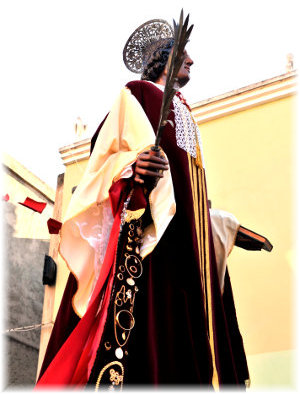

Basilica of Sant'Antioco This Paleochristian Basilica is among the oldest churches in Sardinia: it is located on an high point of the town, in front of Piazza De Gasperi. The Basilica of Sant'Antioco, dedicated to Saint Antioco, patron saint of Sardinia (under the Basilica are the catacombs with the remains of the Saint Martyr), is usually called a Byzantine church, but, in origin, it was built at least on the V - VI century. At that time the original church (6th-7th centuries) had a cross Greek plan, typical of Early Medieval architecture. This early phase is witnessed today by some sculpted marble elements, some held by private collectors, others still found in the church. Every year, usually in April and in August, Sant'Antioco town holds an ancient festival dedicated to the Martyr: its statue, which is usually on display in the church, is carried in a procession through the streets of the town. There is also an interesting parade of traditional costumes, men and women in beautiful dress, oxcarts, and horsemen. Below the church, still more interesting than that, absolutely to see, lie the catacombs (whose entrance is through the Paleochristian Church, dating back perhaps to the 2nd century - 4 th century A.D.), that were created by early Christians from pre-existing Punic hypogea. In one of the five rooms, pictures of the Good Shepherd fresco are still visible, although very spoiled. The catacombs can be visited when the church is open, but you are not allowed to make pictures. The place is worth a visit. |

